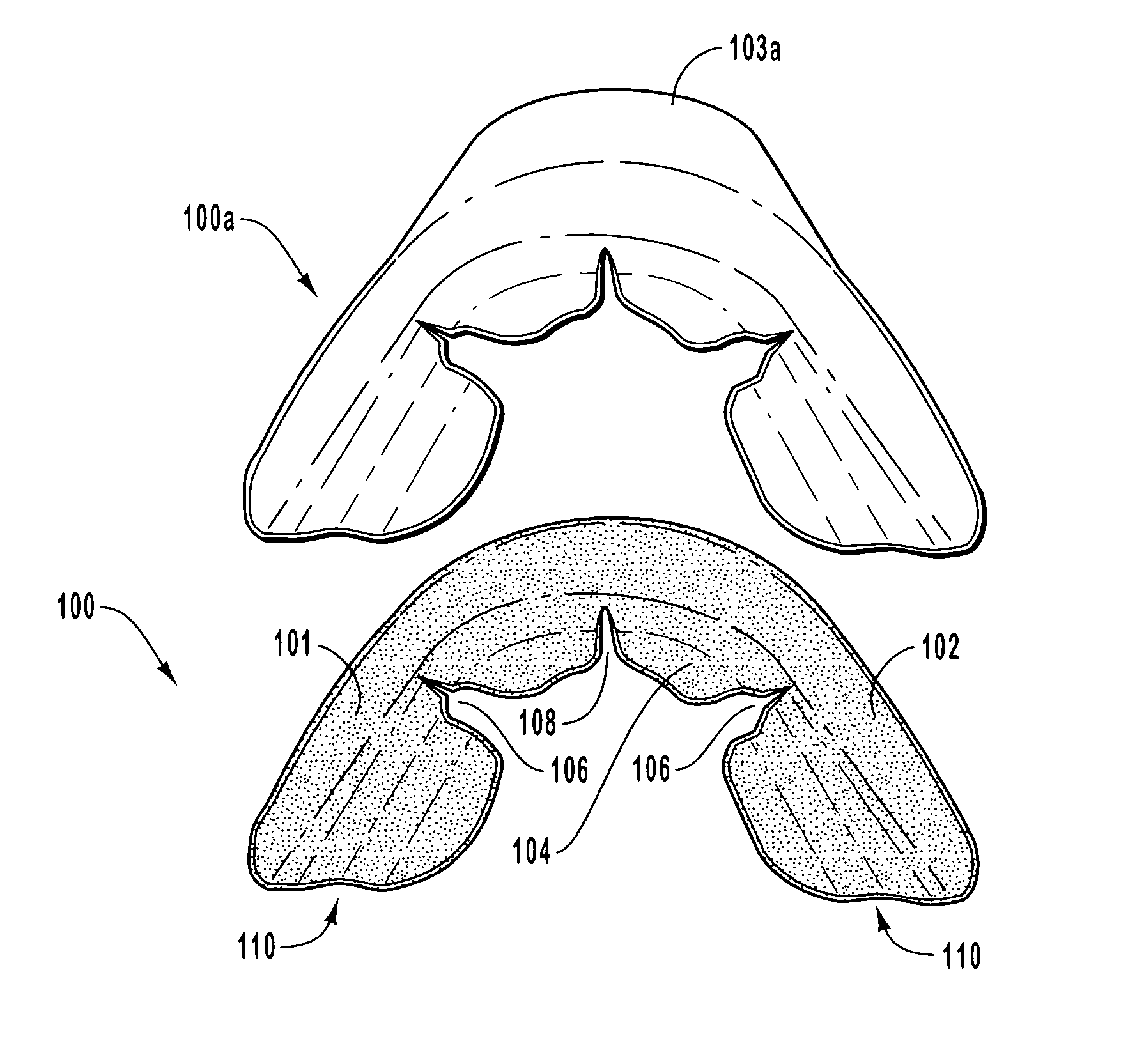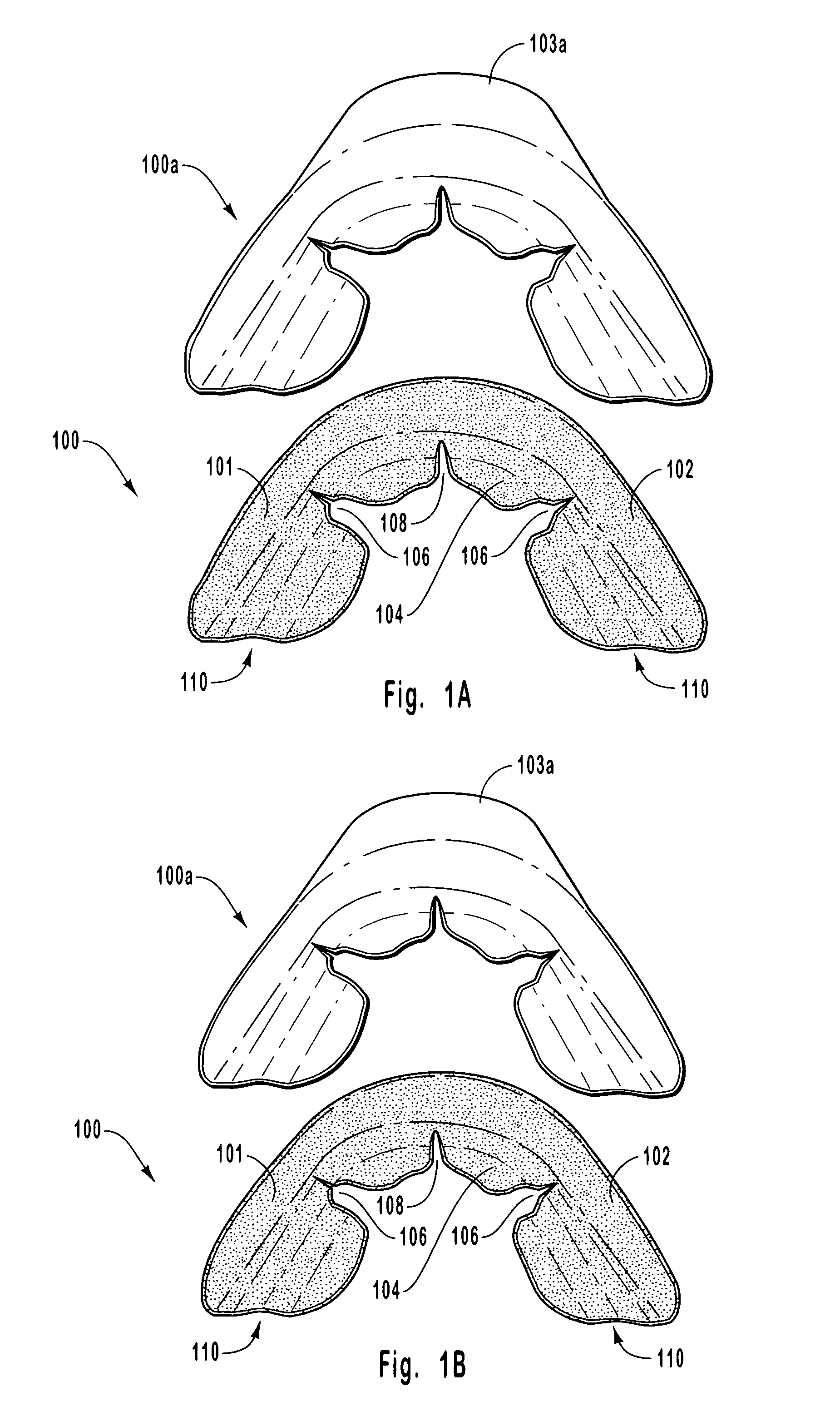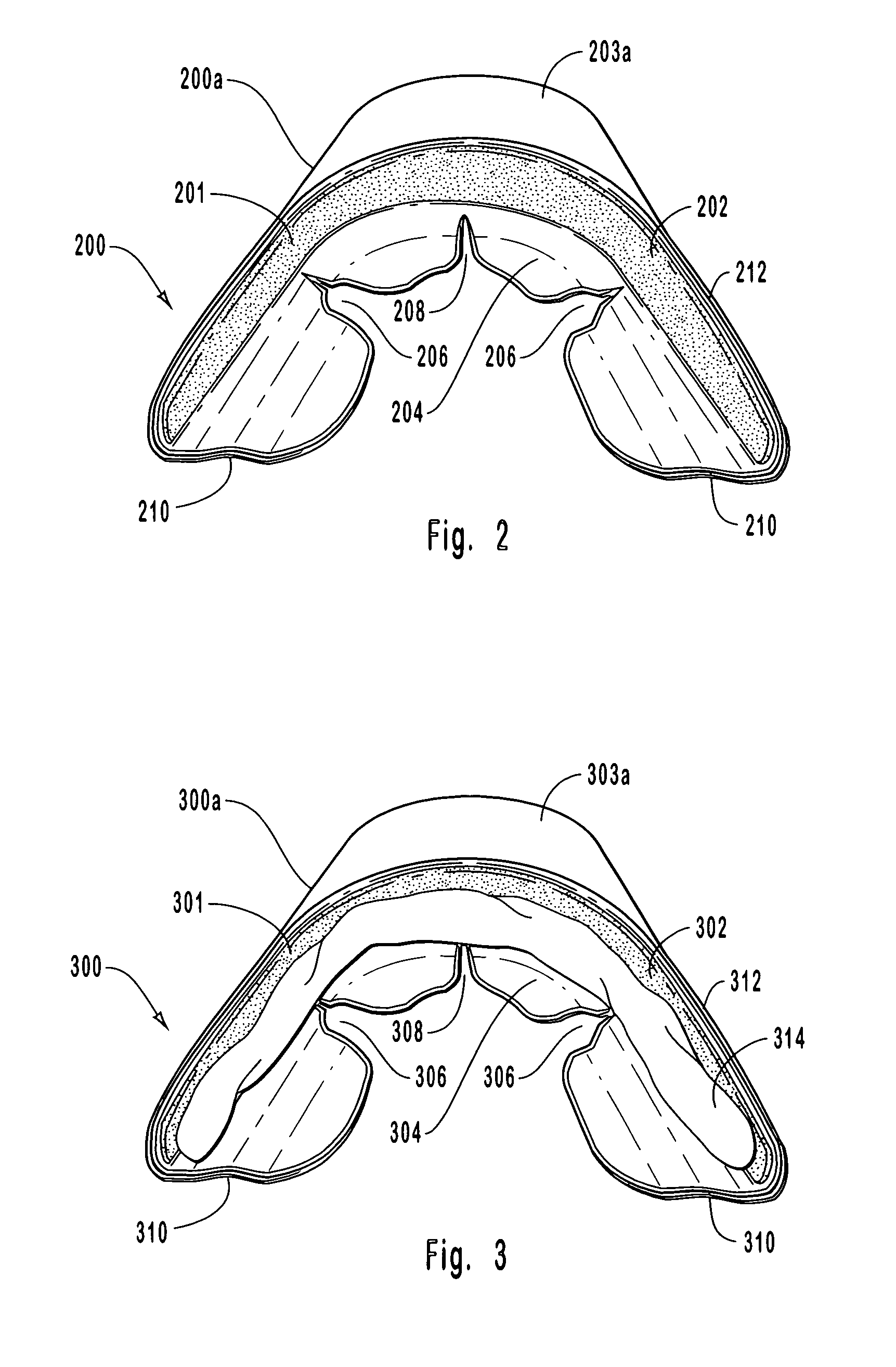[0012] The present invention generally relates to improved dental treatment devices used to treat (e.g.,
bleach) a person's teeth. The inventive tray-shaped device includes a front side wall and a bottom wall. In addition, the tray-shaped device includes at least one of the following features to enhance anatomical fit: (1) the bottom wall includes a plurality of cuts positioned to help the bottom wall better conform to abrupt changes in the diameters of a person's teeth, particularly where the bicuspids and canines meet, (2) the bottom wall includes at least one V-shaped or U-shaped indentation configured to be inserted into the depression typically found along the top surfaces of a person's molars, and (3) the front and bottom wall include radii of curvature that account for typical flaring of a patient's incisors.
[0013] In one embodiment of a treatment device according to the invention, the bottom wall includes a
cut on either side of the device approximately corresponding to the intersection of a person's canines and bicuspids. The cuts help to compensate for the fact that bicuspids are significantly thicker than canines by allowing for an abrupt discontinuity in the bottom wall of the treatment device. Without these cuts the bottom wall would be harder to conform to the canines since the adjacent bicuspids would tend to push the bottom wall away from the canines, thus potentially dislodging the bottom wall in this region. These and any other cuts within the bottom wall may also help compensate for differences between the inner and outer radii of the
dental arch generally defined by the inner and outer tooth surfaces.
[0015] In another embodiment of a treatment device according to the invention, the front and bottom walls may have different radii in order to compensate for the general flaring out of a person's incisors toward the incisal edges. Due to such flaring the
diameter of a person's
dental arch at the incisal edges is generally greater than the
diameter at the
gingival margin. Thus the part of the treatment device corresponding to the incisal edges near a person's incisors may advantageously have a larger
radius than the part of the treatment device corresponding to the
gingival margin. This helps provide better fit of the treatment device over a person's tooth surfaces.
[0020] The size and shape of the treatment devices according to the invention can be tailored to readily fit a person's upper or lower
dental arch. They may also be tailored to fit person's having differently sized or shaped dental arches. The treatment devices are advantageously designed so as to substantially cover the front and lingual surfaces of the teeth and / or gums to be treated. The treatment devices are advantageously flexible and
adhesive so as to readily conform to a wide variety of differently-sized teeth and dental arches.
[0021] The treatment devices according to the invention can be designed to be worn for any desired time period. Increasing the concentration of
active agent used generally reduces the required
treatment time. Nevertheless, due to the extremely comfortable fit between the inventive treatment devices and the person's teeth, it is possible to wear such devices for extended periods of time. Treatment devices according to the invention can be designed to be worn while, e.g., talking, sleeping, eating, drinking, smiling, frowning, grimacing, yawning, coughing, smoking, or making virtually any
facial expression or mouth contortion. This greatly decreases their intrusiveness into
everyday activities compared to conventional bleaching strips, which do not reliably adhere to teeth, or intrusive bleaching devices such as large, bulky bleaching
dental appliances.
[0023] According to one embodiment, the treatment device may include an associated supporting structure, such as an
exoskeleton, prior to use. An
exoskeleton may be particularly useful where the
barrier layer is very thin and flexible. The
exoskeleton may have the same configuration as the treatment device so as to receive and support the front and bottom walls of the treatment device. The exoskeleton can provide additional support and ease of placement to the treatment device while positioning the device over a person's teeth. In one embodiment, the exoskeleton includes a
handle to facilitate gripping and maneuverability of the exoskeleton while placing the treatment device over the teeth. Once positioned, the exoskeleton can be removed so as to leave the treatment device in place over the teeth.
 Login to View More
Login to View More  Login to View More
Login to View More 


